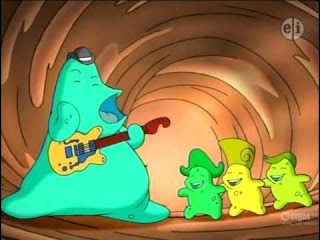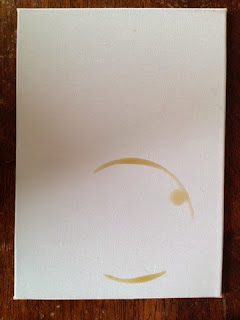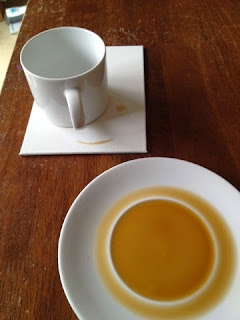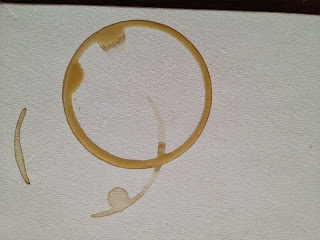"Schmidt is a retired professor of psychology at UCLA, and an authority on how humans learn and develop motor skills.
As Schmidt watches the golfers practice the same swing with the same clubs, over and over, he chuckles. There’s a much better way to learn than this kind of rote physical memorization.
“I give conference presentations to golf instructors and professionals,” Schmidt said. “They’re quite surprised.”
Schmidt explains that repetitive drilling on the same task is called “block practice.” You do the same thing, over and over, in one block of activity. He argues that a better way to learn is to practice several new things in succession, a technique called “variable practice” or “interleaving.” So a golfer would interleave her exercises at the range by aiming at different targets each time, by mixing up the kinds of shots she takes or switching the clubs she uses."http://ww2.kqed.org/mindshift/2014/10/28/how-relearning-old-concepts-alongside-new-ones-makes-it-all-stick/
Gross motor coordination develops naturally when children get enough free play. My children get PLENTY of free play and they always have. However, my oldest developed asynchronously and while his running and jumping muscles were crazy strong, his left-right coordination was (and continues to be) pretty amazingly bad...to the point he needs therapeutic services to encourage him to work those weak muscles. Through hours of therapy that targets his left-right coordination we have made some big strides. And finally he is ready to try pedaling (left right left right).
In the past, as soon as we saw he could do something that he had struggled with, my husband and I would rejoice and up the ante. For example. as soon as he pedaled his tricycle, which was way too small for him, we bought him a pedal bike. Of course, Mikey didn't receive a "big boy" bike with the enthusiasm we thought he would. So it sat collecting dust for the past year. Until now...
With stronger coordination and sufficient inspiration from neighborhood kids, Mikey said he was ready to try again. We let him take the lead and make the plans. He suggested taking his pedal bike without training wheels AND his balance bike to a nearby park. And it just so happened that I had just read the kqed Interleaving article about interleaving the previous week so I was amenable to hauling the old technology along with the new technology for him to switch between.
Once at the park it was as if I were watching a perfect example of live interleaving. He casually switched back and forth between riding the balance bike and riding the pedal bike. And now I remember him as an infant - sometimes sitting to play, sometimes laying down; as an almost-toddler - sometimes crawling, sometimes walking; and as he weaned from breastfeeding at age two - sometimes nursing at bedtime, sometimes not. I realize that all these lessons in a young child learning his or her physical body are not what Professor Schmidt had in mind when he studied how adults learn but it is nice to put a word - "interleaving" - to describe my son's learning process. It gives my young child's work power, makes it important, and reminds me to allow him to work through things at his own pace and in his own way.













